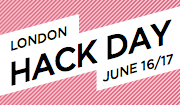@media, Designing Next Generation Web Apps
Jeffery Veen's discussion, mainly covering what's called Web2.0 applications. The elements are:
Surface (typography, layout, colour, grid - skin), Skeleton (web application interactions, page elements - "what can I poke?"), Structure (information architecture and hierarchy), Scope ("what can I do now?") & Strategy (what do we actually do).
- Surface
Try to make users feel in control - example was the rainfall map with a month slider, which then interactively showed rainfall as a progressively bigger raindrop - much easier to comprehend than a table full of dry [sic] figures for rainfall per month! Trust users as peers. Trust of the surface presentation can help to foster trust of underlying data: it can influence visual appeal, cognition and emotion and increas the halo effect (credibility -> users trust data and content if they trust the visual design).
References: Don Norman, Emotional Design; BJ Fogg, Persuasive Technology - Skeleton
The design process: Whiteboard/fag packet! -> wireframes -> AJAX layout
Ref: www.kayak.com - search results page.
Ajax interaction & design:- Discoverability - how easy is it to find stuff? - give gentle hints like auto-complete search box
- Recoverability - catch errors before they occur (form validation etc)
- Context - real-time feedback to compensate for poor browser interface (eg proper progress bar for file uploads etc)
- Feedback - how the system behaves, and the states of pages.
- Structure
For a site like del.icio.us, tagging forms the "experience" as the system architecture. Similarly Flickr - tag your images and then use these to pivot on your metadata, to find others with similar tags. Builds communities of people with common interests. This breaks down the old style rigid hierarchical structure - no one can actually draw a sitemap for Flickr! - Scope
Scope is more focussed than before; we still have some of the old problems on a new platform, but now with added participation.
Apparently, 60-70% of CMS's fail!
For some functions, a blog such as Type Pad with a bit of custom design would be more than sufficient for eg Press Releases - whereas a CMS would perhaps be overkill.
Ref: The Hype Machine - go look
Also allowing stuff like the GoogleMaps API into the hands of the right dedicated people can lead to much more effective and localised sites such as chicagocrime.org
Similarly Measuremap - a stats engine - is open source. Your site is just one piece of a larger whole. - Strategy
How is the audience changing?
Dedicated amateurs can now provide rich content - amateurisation is the "architecture
of participation".
Travel booking sites - travel agents have virtually gone away. A huge majority of people now book travel online.
Wikipedia - how to deal with user interactions etc.
Furl - your personal web file.







No comments:
Post a Comment